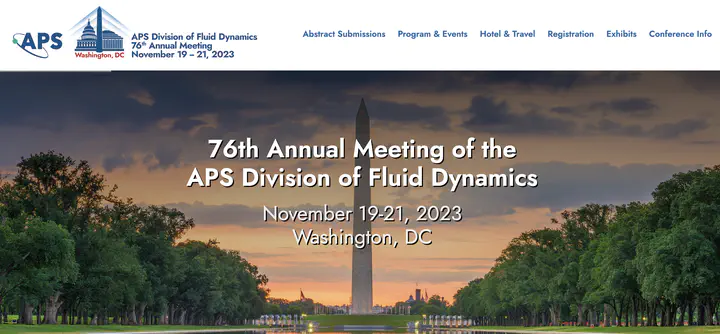Influence of time-varying freestream conditions on unsteady separation in a turbulent boundary layer
 Image credit: APS-DFD23
Image credit: APS-DFD23
Abstract
The Large-Eddy Simulation technique is used to carry out numerical simulations of unsteady separation in a turbulent boundary layer. The unsteadiness is generated by an oscillating freestream vertical velocity profile $V_{top}(x, t)$. In previous meetings we described the effects of the oscillation frequency on the dynamics of unsteady flow separation. Here we fix the reduced frequency at $k = 1$, and we describe the effects of the freestream condition on the flow physics. Three cases are analyzed: while in case A, corresponding to $k = 1$ in Ambrogi et al.[J. Fluid Mech. 245, A10, 2022], $V_{top}$ changes from suction-blowing to blowing-suction in a complete cycle, case B and C are both suction-blowing only and the strength of the adverse pressure gradient is modulated in time. Moreover, the boundary layer in case B never approaches a zero pressure gradient condition. A closed separation bubble is formed in all cases, and for case B its dimensions matches the steady calculation. The time evolution of turbulent kinetic energy (TKE) reveals that an advection mechanism is present in all cases. Case A and C are characterized by a similar advection process in which the high TKE region generated in the separated shear layer is washed out of the domain as a rigid body. In case B, on the other hand, the separation bubble never disappears and the separated shear layer is characterized by a breathing pattern.